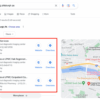Inside your buyers mind – Inside your buyer’s mind takes center stage, offering a deep dive into the intricate world of consumer behavior. We’ll explore the customer journey, from initial awareness to post-purchase, uncovering their needs, motivations, and pain points. This journey isn’t just a series of steps; it’s a tapestry woven with emotions, expectations, and values that shape purchasing decisions. Understanding these nuances is key to crafting compelling marketing strategies and fostering lasting customer relationships.
This exploration delves into the psychology behind buying decisions, providing actionable insights for businesses looking to connect with their target audience on a deeper level. We’ll uncover the factors influencing customer choices, from their emotional responses to their core values, enabling businesses to tailor their offerings to meet specific needs and desires.
Understanding the Customer Journey for SaaS Products
The customer journey is a critical aspect of any successful business, particularly in the software-as-a-service (SaaS) industry. Understanding the steps a customer takes from initial awareness to post-purchase is crucial for tailoring marketing efforts and optimizing the overall experience. By identifying pain points and offering solutions at each stage, SaaS providers can significantly increase customer satisfaction and loyalty.This exploration dives into the typical customer journey for a specific SaaS product: a project management tool, focusing on the key stages and strategies for addressing customer pain points.
This analysis is based on common SaaS trends and best practices in the industry.
Awareness Stage
Customers become aware of the need for a project management tool when faced with project complexity or inefficiencies in their current processes. This could stem from issues such as communication breakdowns, difficulty tracking progress, or a lack of collaboration tools. In the awareness stage, the key is to showcase how the tool addresses these specific challenges. This involves highlighting the tool’s features, benefits, and how it solves real-world problems for users.
Targeted advertising, content marketing (blog posts, webinars, case studies), and social media engagement can effectively reach potential customers at this stage. For instance, a company could create content demonstrating how their tool streamlines communication between team members.
Consideration Stage
Potential customers now actively compare different project management tools. They are evaluating features, pricing, and the overall value proposition. Common pain points at this stage include the overwhelming choice of tools, the difficulty in evaluating hidden costs, and the need for a clear understanding of the tool’s implementation process. To address these, SaaS companies should provide comprehensive product demos, detailed pricing comparisons, and testimonials from satisfied users.
Creating clear and concise information on how to use the product is critical. This includes easy-to-understand tutorials and comprehensive documentation.
Decision Stage
This stage involves the actual purchase decision. Pain points at this stage frequently involve a lack of trust in the product, concerns about the vendor, or hesitations about the commitment. Addressing these involves showcasing trust signals such as positive reviews, industry recognition, or secure payment gateways. Providing a risk-free trial period is essential. Offering a personalized approach to the sales process and addressing customer concerns promptly can significantly influence their decision.
Post-Purchase Stage
Post-purchase, the focus shifts to customer satisfaction and retention. Pain points here often include difficulties with onboarding, lack of support, and a lack of ongoing value. Effective onboarding processes are crucial. Providing comprehensive training materials, dedicated support channels (like live chat or email), and fostering a strong community forum where users can interact and share best practices, is essential.
For instance, a company could offer regular workshops or webinars to help users maximize the tool’s potential.
| Touchpoint | Customer Emotion | Desired Experience | Actionable Insight |
|---|---|---|---|
| Initial Website Visit | Intrigued, Searching for solutions | Clear value proposition, easy navigation, high-quality visuals | Optimize website content for search terms related to project management challenges. |
| Product Demo | Curious, Assessing value | Informative, engaging, tailored to specific needs | Offer personalized demos, highlight key features relevant to the customer’s industry. |
| Trial Period | Cautious, Evaluating the fit | Intuitive, easy to use, provides clear benefits | Design a user-friendly trial experience with comprehensive onboarding resources. |
| Post-Purchase Support | Satisfied, Seeking ongoing value | Responsive, helpful, builds long-term relationships | Provide multiple support channels, offer regular updates, create a supportive community. |
Identifying Customer Needs and Motivations
Understanding your customers’ needs and motivations is crucial for SaaS product success. It’s not enough to simply build a great product; you need to connect it with the desires and pain points of your target audience. This deep understanding informs product development, marketing strategies, and ultimately, drives revenue growth. Knowing
Understanding your buyer’s mindset is key to effective marketing. To truly connect with your audience, you need to anticipate their questions and concerns. This often means creating a platform where they can easily find answers. A well-structured Q&A site, like the one you can build using this guide on creating a Q&A site in WordPress , can be a powerful tool.
By providing readily available information, you position yourself as a helpful resource, building trust and fostering stronger customer relationships. This in turn, deepens your understanding of what your buyers need and want, ultimately leading to a better understanding of their minds.
why* customers choose one product over another, and what specifically compels them to buy, allows for targeted and effective communication and solution design.
A thorough understanding of customer needs and motivations provides the framework for building products that resonate deeply with the user base. This understanding goes beyond basic demographics; it delves into the underlying drivers of purchasing decisions. By pinpointing the specific pain points and aspirations that motivate customer choices, businesses can refine their offerings to precisely meet those needs, fostering stronger customer relationships and loyalty.
Significance of Understanding Customer Needs and Motivations
Understanding customer needs and motivations is paramount to success in the SaaS market. A deep comprehension of what drives customer decisions enables the creation of targeted marketing strategies and the development of products that genuinely address customer pain points. This understanding fosters a stronger connection between the product and the customer, resulting in higher customer satisfaction and loyalty. Successful SaaS companies consistently prioritize this understanding.
Key Factors Driving Customer Decisions
Several key factors influence customer decisions in the SaaS realm. These include the perceived value of the product in relation to its price, the ease of use and integration into existing workflows, the perceived reliability and security of the platform, and the level of customer support provided. Social proof, such as positive reviews and testimonials, also plays a significant role.
Additionally, the alignment of the product with the customer’s overall business goals and objectives heavily influences their purchasing decisions.
Methods for Uncovering Customer Needs and Motivations
Numerous methods can be used to uncover customer needs and motivations. Market research, including surveys, interviews, and focus groups, provides direct insights into customer perspectives. Analyzing customer feedback from support tickets, online reviews, and social media interactions can also reveal valuable information. Analyzing website analytics and observing user behavior on the platform offers further insights. Understanding competitor offerings and market trends allows for contextualization and comparison.
Finally, conducting user testing provides direct feedback on the product’s usability and functionality.
Examples of Successful Customer Need Identification
Several companies have successfully identified and addressed customer needs. For instance, a company providing project management software might identify that customers value ease of collaboration and task management. Consequently, they can develop features that facilitate seamless teamwork and task delegation, effectively addressing this need. Another example is a customer relationship management (CRM) platform focusing on streamlined communication and data management, providing tools to optimize workflow and productivity, thereby meeting the need for improved sales and marketing efficiency.
Companies that deeply understand customer needs, and then adapt their offerings, often achieve considerable market share and profitability.
Contrasting Customer Motivations and Their Impact
| Motivation | Example | Impact on Purchase |
|---|---|---|
| Cost Reduction | Seeking a SaaS solution to automate repetitive tasks, thereby reducing labor costs. | Highly motivated to choose a cost-effective solution, often prioritizing pricing and value proposition. |
| Improved Efficiency | Implementing a project management tool to streamline workflows and increase team productivity. | Likely to prioritize features that enhance efficiency, and value the time saved by using the product. |
| Enhanced Security | Selecting a cloud storage solution to safeguard sensitive data from physical loss. | Highly motivated by security features, often prioritizing data protection and encryption. |
| Increased Productivity | Adopting a CRM system to optimize sales and marketing processes. | Likely to prioritize features that enhance sales conversion and customer management. |
Exploring Customer Pain Points and Frustrations
Understanding your customer’s pain points is crucial for developing effective SaaS solutions. By identifying these frustrations, you can tailor your product to alleviate them and foster a positive user experience. This leads to increased customer satisfaction, loyalty, and ultimately, greater success for your business.Identifying and addressing customer pain points isn’t just about fixing bugs; it’s about truly understanding the underlying needs and desires of your target audience.
A deep dive into their frustrations can reveal opportunities for innovation and improvements that might not be apparent otherwise.
Common Customer Pain Points in the SaaS Market
Customer pain points vary greatly depending on the specific SaaS product and target audience. However, some common themes emerge across many sectors. These include difficulties with product complexity, lack of clear documentation, inadequate customer support, and concerns about data security and privacy. A strong understanding of these common frustrations can help businesses tailor their solutions to address these concerns directly.
Understanding your buyer’s mindset is key to effective marketing. But, sometimes we get so caught up in optimizing for search engine ranking factors, like backlinks (check out this article on google search ranking factors links are not in the top 3 ), that we lose sight of the real people behind the searches. Ultimately, focusing on the buyer’s needs and desires is what truly drives results.
Impact of Pain Points on the Customer Experience, Inside your buyers mind
Customer pain points can significantly impact the overall user experience. A frustrating onboarding process can discourage potential customers from using the product, while a lack of clear support channels can lead to dissatisfaction and churn. Furthermore, security concerns can erode trust and lead to negative reviews, impacting reputation and future sales. Addressing these pain points directly is essential for building a positive and lasting relationship with customers.
Understanding your buyer’s mindset is crucial, but sometimes a website’s performance on Google can be a stumbling block. If your page isn’t ranking as well as you’d like, it could be due to various factors, such as poor SEO strategies. To learn more about why your page isn’t ranking highly on Google, check out this helpful resource: why page isnt ranking google.
Ultimately, understanding search engine optimization is part of getting into your buyer’s head and figuring out how to best connect with them online.
Identifying Specific Customer Pain Points
A variety of methods can be used to pinpoint specific customer pain points. Gathering feedback directly from customers through surveys, interviews, and feedback forms is crucial. Analyzing customer support tickets and online reviews can also reveal recurring themes and common frustrations. Analyzing user behavior within the product, such as areas with high abandonment rates, can help uncover specific pain points in the user flow.
Finally, actively engaging in online communities and forums related to the product or industry can provide valuable insights into customer concerns.
Examples of Businesses Addressing Customer Pain Points
Many SaaS businesses have successfully addressed customer pain points, leading to improved customer experiences and increased revenue. For example, companies often streamline onboarding processes by providing step-by-step guides and interactive tutorials. Others offer comprehensive and easily accessible support documentation, including FAQs and video tutorials, which greatly reduce the need for direct customer support intervention. Moreover, prioritizing data security and privacy through transparent policies and secure infrastructure builds customer trust.
Categorizing Customer Pain Points by Stage of the Customer Journey
| Stage | Pain Point | Solution |
|---|---|---|
| Awareness | Lack of clear value proposition; difficulty understanding the product’s benefits | Develop compelling marketing materials highlighting the product’s unique value proposition. Showcase success stories and case studies. |
| Consideration | Limited product information; unclear pricing structure; lack of trust in the vendor | Create detailed product demos and presentations. Provide transparent pricing information and clear comparison charts. Showcase positive customer reviews and testimonials. |
| Decision | Complex purchase process; lack of confidence in the product’s ability to meet needs; concerns about integration | Simplify the purchase process. Offer a free trial or a free version of the product. Provide detailed integration guides and support. Offer a personalized consultation for prospective customers. |
| Adoption | Difficult onboarding; lack of product training; insufficient support resources | Create an easy-to-follow onboarding process with step-by-step guides and interactive tutorials. Offer dedicated support resources like FAQs, help articles, and live chat support. |
| Retention | Product limitations; lack of flexibility; poor customer support response times | Continuously improve and enhance the product based on customer feedback. Offer flexible pricing options and customized solutions. Provide fast and effective customer support channels, such as dedicated support teams and proactive outreach. |
Analyzing Customer Perceptions and Expectations
Understanding customer perceptions is crucial for SaaS product success. It goes beyond simply knowing what customerssay* they want; it delves into the underlying beliefs, attitudes, and assumptions they hold about your product and your brand. This understanding allows you to fine-tune your offerings to better meet those expectations and build stronger, more loyal relationships.Customer perceptions are shaped by a complex interplay of factors, including prior experiences, word-of-mouth, marketing messages, and even cultural influences.
Accurately gauging these perceptions provides valuable insight into how customers view your product’s value proposition, its strengths, and its potential weaknesses. This insight enables proactive adjustments to your product, marketing, and overall customer service strategy.
Importance of Understanding Customer Perceptions
Accurate understanding of customer perceptions is vital for effective product development and marketing. Misaligned perceptions can lead to dissatisfaction, reduced sales, and a damaged brand reputation. Customers who perceive a product as lacking in value, or in contrast, perceiving it as far exceeding expectations, are more likely to become loyal advocates or detractors, respectively.
Methods for Gathering Information About Customer Perceptions
Several methods can effectively gather information about customer perceptions. Surveys, both quantitative and qualitative, are powerful tools for collecting data on customer attitudes and opinions. Focus groups provide valuable insights into the reasons behind customer perceptions, offering an opportunity to dig deeper into customer motivations. Customer interviews offer more in-depth and nuanced understanding, revealing the context surrounding their perceptions.
Analyzing online reviews and social media conversations allows for a broader understanding of public sentiment and can pinpoint areas of improvement.
Strategies for Managing Customer Expectations
Managing customer expectations is crucial for minimizing disappointment and fostering positive relationships. Transparency and clear communication about product capabilities and limitations are essential. Providing realistic timelines and acknowledging potential challenges upfront helps avoid setting unrealistic expectations. Delivering on promises and exceeding expectations when possible strengthens customer trust and loyalty. Proactive communication during and after product use helps customers understand and utilize the product’s capabilities effectively.
Impact of Customer Perceptions on Brand Loyalty
Positive customer perceptions significantly impact brand loyalty. Customers who perceive a brand as trustworthy, reliable, and aligned with their values are more likely to become loyal advocates. Conversely, negative perceptions can lead to customer churn and brand damage. Building strong brand loyalty hinges on consistently delivering on positive perceptions, thus creating a cycle of satisfaction and advocacy.
Customer Expectations Across Demographics
| Demographic | Expectation | Example |
|---|---|---|
| Millennials | Value-driven, personalized experiences with seamless integration across various platforms. | A user-friendly interface, personalized recommendations, and consistent mobile and desktop experiences. |
| Gen Z | Experiences that are both engaging and socially conscious, emphasizing sustainability and ethical practices. | Transparency about sourcing, eco-friendly packaging, and support for social causes. |
| Baby Boomers | Reliability, stability, and ease of use, prioritizing straightforward functionalities and intuitive controls. | Simple navigation, clear instructions, and a well-established product history. |
| Gen X | A balance of efficiency and control, seeking practical tools that address real-world problems. | Products that are easy to learn and use with strong features for efficiency. |
Analyzing Customer Values and Priorities

Understanding customer values is crucial for building strong, lasting relationships with your audience. It’s not just about what they buy, but why they buy it. Values drive purchasing decisions, shape brand loyalty, and ultimately impact the success of your SaaS product. Identifying these values allows for targeted marketing, tailored product development, and a more resonant brand message.Customer values represent the fundamental beliefs, principles, and priorities that guide their actions and decisions, including purchasing behaviors.
These values are deeply ingrained and often influence choices far beyond the immediate functional needs of a product. They represent the “why” behind the “what” of customer interactions.
Significance of Customer Values
Customer values are the driving force behind purchasing decisions. They extend beyond simple functionality, influencing brand loyalty and product advocacy. By understanding what truly matters to your customers, you can tailor your offerings and marketing efforts to resonate deeply, leading to increased engagement and conversions. This deeper understanding fosters a sense of trust and connection that translates into long-term loyalty.
Methods for Identifying Customer Values
Several methods can be used to uncover customer values. Surveys, interviews, and focus groups provide direct insights into their priorities. Analyzing customer feedback from reviews, social media interactions, and support tickets can reveal implicit values. Observing customer behavior on your website and within your product provides further valuable insights. Analyzing purchase history and usage patterns can also highlight specific value drivers.
Understanding the emotional and psychological needs behind their choices is equally critical.
Examples of How Companies Leverage Customer Values
Companies often leverage customer values in their marketing and product development. For example, a company prioritizing environmental sustainability might highlight eco-friendly product features and manufacturing processes. A company emphasizing community might organize user events or foster a strong online forum. This alignment between brand values and customer values fosters a stronger emotional connection, increasing brand loyalty.
Relationship Between Customer Values and Brand Loyalty
A strong alignment between customer values and brand values is crucial for fostering brand loyalty. When customers feel their values are reflected in a company’s actions and offerings, they are more likely to remain loyal and advocate for the brand. This is especially true in the SaaS industry where relationships are built on trust and shared goals.
Customer Value Segments and Purchasing Behaviors
| Value Segment | Priorities | Purchase Tendencies |
|---|---|---|
| Efficiency Seekers | Speed, productivity, ease of use, and time-saving features. | Prioritize products that streamline their workflow and save them time. They are likely to be price-sensitive, but value demonstrable ROI. |
| Innovation Enthusiasts | Cutting-edge technology, new features, and staying ahead of the curve. | Value innovative features and early access to new releases. Often willing to pay a premium for the latest technology. |
| Community Builders | Collaboration, social interaction, and a sense of belonging. | Seek products with strong community features, forums, and opportunities to connect with other users. |
| Security-Conscious Consumers | Data privacy, security, and trustworthiness. | Prioritize robust security measures and transparent data handling practices. May be less price-sensitive, but prioritize security above all. |
Examining Customer Decision-Making Processes

Understanding how customers make purchasing decisions is crucial for SaaS product success. Knowing the factors that influence their choices allows businesses to tailor their marketing strategies and product development to better meet customer needs and expectations. This section delves into the complexities of the customer decision-making process, exploring the various factors at play and providing practical insights into how to understand it.
Factors Influencing Customer Decisions
Customer decisions are rarely based on a single factor. A multitude of influences, both rational and emotional, shape the final purchase. These influences can be broadly categorized into:
- Economic factors, such as budget constraints, perceived value for money, and the availability of alternative solutions.
- Social factors, including peer recommendations, social norms, and cultural influences.
- Psychological factors, encompassing individual needs, motivations, and personal preferences.
- Situational factors, such as time constraints, urgency, and specific needs at a given moment.
- Technological factors, including the ease of use, availability of tools and resources, and the level of technological proficiency.
Examples of Customer Decision-Making
Consider a customer researching a project management tool. Their decision might be influenced by the need for a user-friendly interface (economic factor), positive reviews from colleagues (social factor), a desire for increased productivity (psychological factor), and a looming deadline (situational factor). Their choice will likely involve evaluating various features, comparing prices, and reading testimonials. Alternatively, a consumer purchasing a new smartphone might prioritize camera quality (economic), brand reputation (social), the need for better communication (psychological), and the need to replace a broken phone (situational).
Methods for Understanding the Customer Decision-Making Process
Numerous methods can be used to understand the customer journey and decision-making process. These include:
- Surveys to collect quantitative and qualitative data on customer preferences and motivations.
- Interviews to gain in-depth insights into customer experiences and decision-making processes.
- Focus groups to explore collective opinions and experiences related to product usage.
- A/B testing to measure the impact of different messaging, features, or designs on customer conversion rates.
- Analyzing website analytics to identify patterns in customer behavior and areas where the customer experience needs improvement.
Role of Emotions and Biases in Decision-Making
Emotions and cognitive biases play a significant role in the customer decision-making process. Customers often make purchasing decisions based on feelings of trust, excitement, or fear. Common biases like confirmation bias (seeking information that confirms pre-existing beliefs) and availability heuristic (relying on readily available information) can influence choices.
Steps in a Typical Customer Decision-Making Process
The customer journey is often complex, but a simplified model can help identify key stages.
| Step | Description | Example |
|---|---|---|
| Problem Recognition | Customer identifies a need or problem that their current solution can’t address. | A business realizes its current CRM system is hindering team collaboration. |
| Information Search | Customer actively seeks information about potential solutions to the identified problem. | The business researches different CRM software options. |
| Evaluation of Alternatives | Customer compares different options based on features, price, and reviews. | The business evaluates different CRM platforms based on their pricing, features, and user reviews. |
| Purchase Decision | Customer selects the most suitable solution based on their needs and preferences. | The business chooses the CRM software that best suits their needs and budget. |
| Post-Purchase Evaluation | Customer assesses their satisfaction with the chosen solution and the overall experience. | The business assesses the effectiveness of the chosen CRM in improving team collaboration. |
Understanding Customer Interactions and Feedback
Knowing your customers’ interactions and feedback is crucial for SaaS product success. It’s not just about collecting data; it’s about understanding the motivations behind that data and using it to refine your product and cultivate loyal customers. Listening to your users allows you to anticipate needs, identify pain points, and build a strong brand reputation.Customer feedback, whether positive or negative, offers invaluable insights.
Understanding how customers interact with your product—the steps they take, the features they use most, and the challenges they encounter—provides a roadmap for improvement. Active listening and thoughtful responses demonstrate your commitment to customer satisfaction and fosters a sense of community.
Methods for Collecting Customer Feedback
Gathering customer feedback is an ongoing process. Various methods are available to collect diverse perspectives and understand customer interactions. Surveys are a popular choice for quantifiable data, while interviews offer in-depth qualitative insights. Analyzing support tickets and user reviews provides another valuable perspective on customer experiences. Ultimately, the best approach is a combination of methods to gain a holistic understanding of customer needs and behaviors.
Strategies for Responding to Customer Feedback
Effective response to feedback is vital for building trust and loyalty. A prompt and professional response demonstrates your commitment to customer satisfaction. Acknowledgement of feedback, even if the solution isn’t immediate, assures customers that their voices are heard. Addressing concerns with empathy and a proactive approach fosters positive relationships. It’s important to remember that feedback is not just about fixing problems, but also about celebrating successes and acknowledging appreciation.
Examples of Companies Using Customer Feedback
Numerous companies have successfully used customer feedback to improve their products and services. For example, companies like Zappos use extensive surveys and feedback forms to gain insights into customer experiences and tailor their services accordingly. By actively listening to customer concerns and addressing them, they have built a loyal customer base. Similarly, companies like Salesforce have implemented feedback mechanisms to understand the evolving needs of their clients and adapt their offerings accordingly.
Importance of Building Strong Customer Relationships
Building strong customer relationships is paramount for long-term success. Customer loyalty translates into repeat business, positive word-of-mouth referrals, and a strong brand reputation. By consistently listening to and responding to customer feedback, you create a positive experience that fosters trust and loyalty. These relationships are the cornerstone of a successful SaaS business.
Table of Feedback Channels
| Channel | Method | Pros/Cons |
|---|---|---|
| Surveys | Online questionnaires, polls | Pros: Quantifiable data, broad reach. Cons: Limited depth of information, potential for bias. |
| Interviews | One-on-one conversations | Pros: In-depth qualitative data, understanding context. Cons: Time-consuming, limited sample size. |
| Support Tickets | Analyzing customer support interactions | Pros: Direct insights into pain points, real-time issues. Cons: May not represent the full customer base, potential for bias in reporting. |
| User Reviews | Analyzing feedback on app stores, review sites | Pros: Public perception, direct customer experiences. Cons: Potential for negativity bias, may not represent typical users. |
| Social Media Monitoring | Tracking conversations about your brand | Pros: Real-time feedback, public sentiment. Cons: May be fragmented, difficult to manage large volumes. |
Closing Summary: Inside Your Buyers Mind
In conclusion, understanding your buyer’s mind is more than just a marketing tactic; it’s a crucial step toward building stronger customer relationships. By analyzing their journey, needs, pain points, and motivations, businesses can craft experiences that resonate deeply. Ultimately, this profound understanding leads to greater customer satisfaction, increased brand loyalty, and sustainable business growth. This isn’t just about selling; it’s about connecting.





